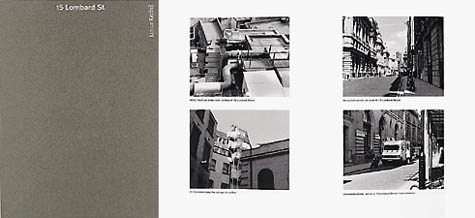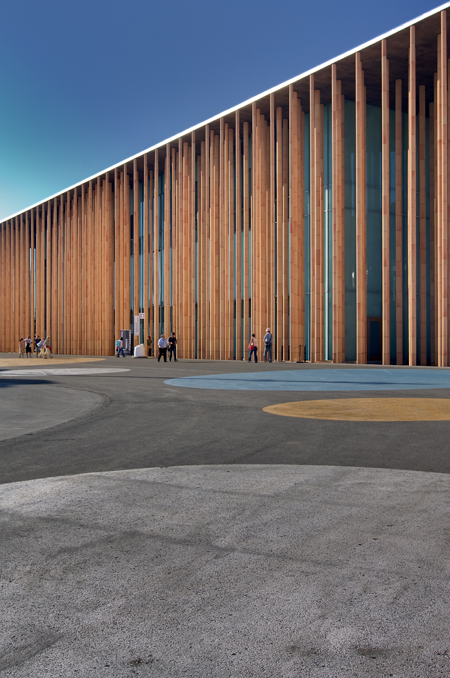A few years ago, the
Boston Globe looked at what we might call the
psychiatric impact of that city's
Big Dig project. The
Big Dig was a massively expensive urban engineering project that put Boston's Central Artery underground, freeing up space on the earth's surface for parks and businesses.
The project, however, was plagued with cost over-runs, engineering difficulties, and the periodic collapse of public support (even the periodic collapse of the ceiling).
From the
Globe:
In the short term, mental health experts say, tempers may flare as the public deals with the logistical inconvenience of detours, lingering uncertainty about the safety of the tunnels, and mounting cynicism about the project. (...) And there may be long-term effects as well – ones that could subtly reshape the city's identity.
What interests me here is not the obvious fact that bad traffic might cause tempers to flare, but the idea that people might develop historically unique psychiatric conditions because of a work of public infrastructure under construction somewhere in their city.
A new tunnel, say, is being dug between Manhattan and New Jersey, and moods in the city begin to darken. Psychiatrists notice a strange surge in patients; people come in complaining of nightmares of forced reunion, being in the same room again with an annoying relative they thought they'd left behind long ago. Homeowners wake at 3am each night, convinced someone's trying to break into the basement. The whole island is ill at ease.
And it's all because of that new tunnel getting closer and closer to completion.
Or, say, a new flood barrier is under construction outside London – a gleaming wall of metal that will rise from the tidal murk. Would it change the dreams of city residents? Would this distant piece of hydro-infrastructure affect how Londoners feel about their city – or about themselves? A new confidence. Dreams of survival. Psychoanalysts report that no one dreams of drowning anymore.
On one level here, the answers are both uninteresting and obvious:
of course, these sorts of projects would affect the dreams, thoughts, and nightmares of a city's residents – after all, those new landmarks would be a part of the world these people live within.
But a less obvious, or less easily tracked, impact might be postulated here – that, say, a new bridge between San Francisco and Oakland might subtly change how San Franciscans think about their peninsular city, and that this only becomes obvious in retrospect, when someone notices that prescription rates have changed or the divorce rate has plummeted: it was the psychiatric implication of a new bridge that did it.
Put another way, if a new highway can have a measurable, and easily detected, impact on a city's economic health and administrative well-being, then could a new highway – or bridge, or tunnel, or flood wall, or, for that matter, sewage treatment plant – have a detectable impact on the city's
mental health? After all, these sorts of massive public works "may carry a psychological burden," the
Boston Globe wrote back in 2006.
It's the psychiatric infrastructure of the city.
(Thanks to Josh Glenn, Eric Fredericksen, and the Hermenautic Circle for the Boston Globe link).

 If you have a spare $250,000 laying around -you could buy this....ahem....'castle' in Kansas....on ebay HERE...... ya - i'm scared - i wish there were interior pictures!!! Be afraid....be very afraid, and yes, this is for REAL! Someone built this! I think they got the architect's plans mixed up with their kindergardener's drawings. It's not all pretty around here at architect design....
If you have a spare $250,000 laying around -you could buy this....ahem....'castle' in Kansas....on ebay HERE...... ya - i'm scared - i wish there were interior pictures!!! Be afraid....be very afraid, and yes, this is for REAL! Someone built this! I think they got the architect's plans mixed up with their kindergardener's drawings. It's not all pretty around here at architect design....

 Alexandra Rowley va
Alexandra Rowley va  A white hallway with turquoise window frames and a red chair at the end!
A white hallway with turquoise window frames and a red chair at the end! maybe more pink accents than red -but notice the little red vases on the mantel, so chic!
maybe more pink accents than red -but notice the little red vases on the mantel, so chic! How about this light turquoise painted kitchen from a vintage magazine with red painted interiors! Maybe the red adjoining flooring and toekick is a bit much.......
How about this light turquoise painted kitchen from a vintage magazine with red painted interiors! Maybe the red adjoining flooring and toekick is a bit much.......
















 [Image: The cover and a spread from
[Image: The cover and a spread from 






















 [Image: From
[Image: From